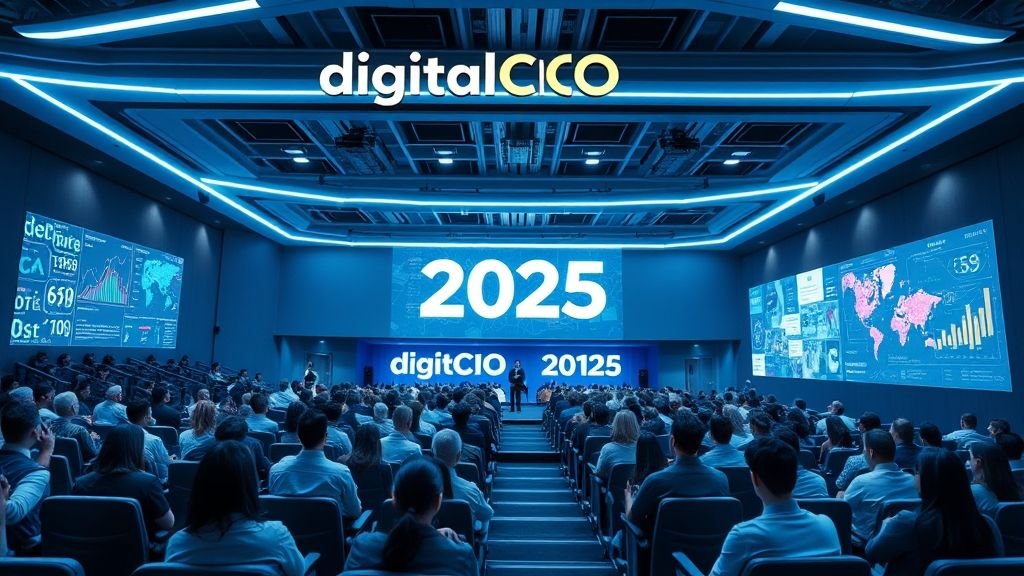Introduction
The world of technology changes fast. New tools, systems, and threats appear every year. Because of this, CIOs—chief information officers—must stay ahead of the curve. In 2025, their roles go beyond managing IT; they become key players in shaping company strategies. Knowing what’s coming and how to adapt matters more than ever. digitalCIO 2025 guides you on what modern IT leaders need to succeed. It’s about preparing for the digital future, leading innovation, and staying competitive.
The Evolving Role of the CIO in 2025
Defining the Modern CIO
The role of a CIO today looks different from 10 years ago. Instead of just overseeing servers and networks, they focus on business growth. They’re now drivers of change—finding ways to use technology to improve customer experience, boost sales, and stay ahead in the market. CIOs are no longer just tech managers but are strategic partners in company success.
Key Skills and Competencies
To thrive in 2025, CIOs need a new set of skills. Digital literacy is a must to understand emerging tools. Cybersecurity expertise helps keep data safe. Data-driven decisions give a competitive edge. Good leaders also excel at managing change, working across teams, and keeping talented staff. All these skills help IT leaders build strong, flexible organizations.
Real-World Examples
Google’s CIO shapes their company’s digital plans by focusing on innovation and user experience. GSK’s CIO pushes advancements in healthcare through new tech projects. These companies show how CIOs can lead in big ways. They prove that understanding tech trends and applying them effectively keeps organizations ahead.
Strategic Technologies Shaping DigitalCIO 2025

Artificial Intelligence and Machine Learning
AI isn’t just sci-fi anymore. It helps predict customer actions, improve operations, and uncover insights buried in data. Companies use AI to automate routine tasks, freeing up staff for more important work. This technology makes businesses more agile and insightful than ever before.
Cloud Computing and Edge Technologies
Moving to cloud platforms lets companies grow fast without huge upfront costs. Multi-cloud setups give flexibility, while edge computing brings data processing closer to devices. Both help companies stay scalable and responsive for new demands.
Cybersecurity and Data Privacy
Threats keep getting smarter. In 2025, CIOs must be proactive about security. Regulations like GDPR and CCPA set rules on privacy, so companies must stay compliant. Taking a strong stance on security and privacy builds trust with customers and safeguards reputation.
Emerging Technologies
Blockchain, quantum computing, and the Internet of Things are becoming more relevant. Early adopters use these to unlock new opportunities in finance, healthcare, and manufacturing. These tools can disrupt markets—and CIOs who understand them will lead the way.
Digital Transformation and Business Innovation
Aligning IT Strategy with Business Goals
Every digital project should connect to the company’s bigger picture. Developing clear roadmaps ensures all tech efforts work toward common goals. Companies that do this see faster growth and better customer loyalty.
Enabling Agility and Scalability
Using DevOps, microservices, and continuous integration makes systems more flexible and easier to change. This approach helps businesses adapt quickly amid rapid market shifts. Scaling up without chaos becomes simpler.
Data-Driven Decision Making
Creating a solid data ecosystem allows real-time insights. Advanced analytics and AI help predict trends, spot problems, and identify opportunities. Making decisions based on facts keeps companies competitive.
Actionable Tips
- Run frequent technology checks to stay current.
- Promote teamwork across departments for innovation.
- Use data as a core part of strategic planning.
The Future of IT Infrastructure and Operations
Automation and AI in IT Operations
Automating routine tasks frees IT staff to focus on complex issues. AI-driven tools monitor systems and fix problems before they affect business. This creates more reliable and resilient operations.
Hybrid and Multi-Cloud Environments
Managing multiple cloud services requires good strategies. Balancing costs, security, and performance is key. Knowing how to optimize these environments helps control spending and improve performance.
Sustainable IT Practices
Green data centers and energy-efficient hardware reduce carbon footprints. Sustainable practices also boost brand reputation and meet societal expectations. This approach benefits both business and the planet.
Leadership, Talent, and Organizational Culture
Building a Future-Ready IT Workforce
Upskilling employees keeps skills sharp. Reskilling prepares teams for new tech roles. Encouraging diversity and inclusion creates fresh ideas and a stronger team.
Fostering Innovation and Change Culture
Supporting experimentation encourages new ways of thinking. Celebrating small wins inspires confidence. Successful cultural shifts lead to more agility and creativity.
Collaborating with Business Units
Aligning IT with other departments builds a shared vision. It improves communication and accelerates projects. Working together makes the whole organization more nimble.
Key Challenges and How to Overcome Them
Digital Disruption and Legacy Systems
Old systems can slow down change. The solution? Plan smooth migrations and integrate new tech gradually to avoid disruption.
Budget Constraints and Investment Justification
Show clear ROI with data and case studies. Demonstrating measurable benefits helps secure funding.
Cybersecurity Risks
Keep defenses strong with regular threat assessments. Invest in training and tools to stay one step ahead of cybercriminals.
Actionable Tips
- Schedule regular security reviews.
- Prioritize investments based on potential impact.
Conclusion
DigitalCIO 2025 is about more than managing technology. It’s about leading innovation, managing change, and building a future-ready organization. Successful CIOs will be those who understand upcoming trends and act swiftly. They will shape their companies’ futures by balancing technology, talent, and strategy. Preparing today means staying ahead tomorrow.
